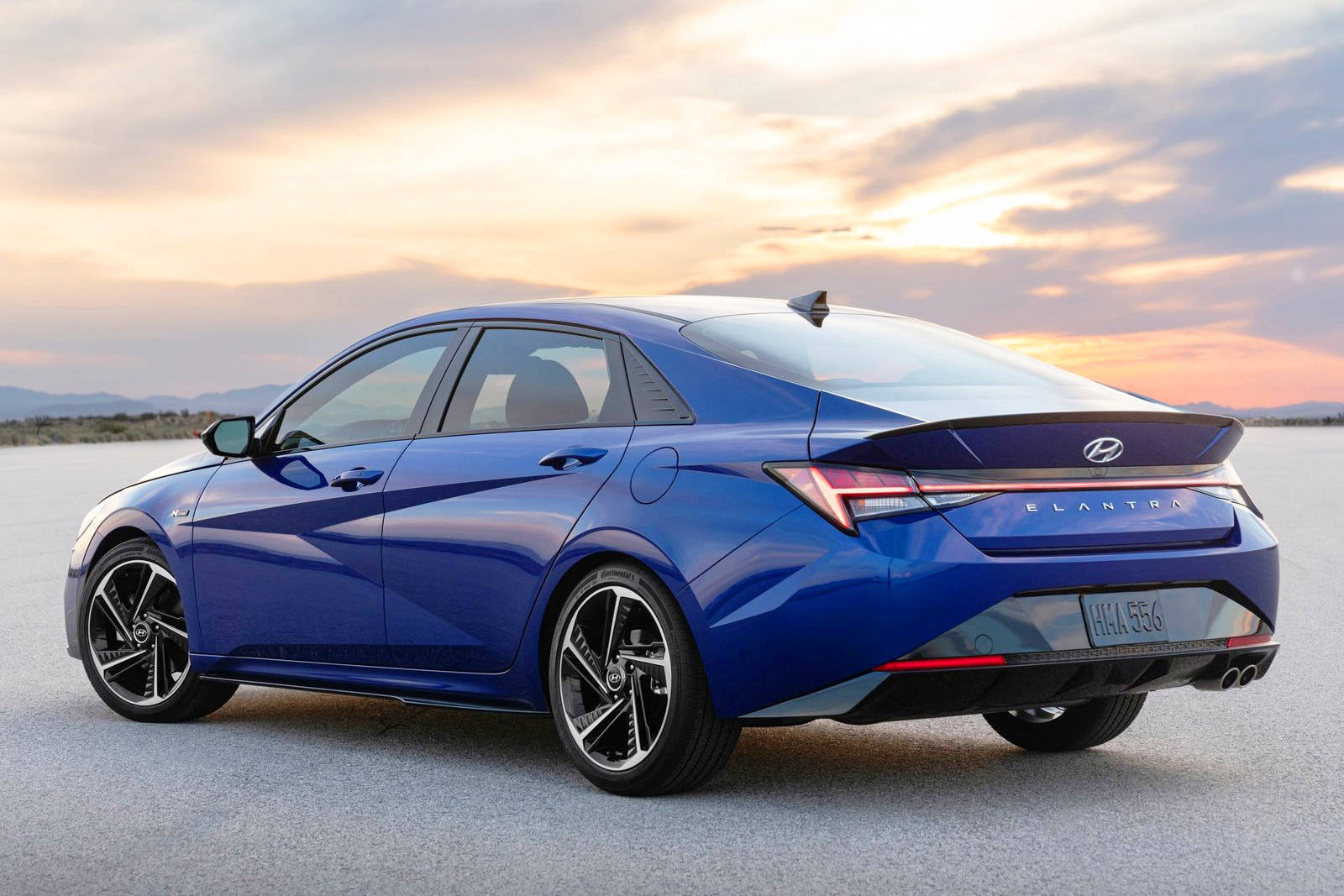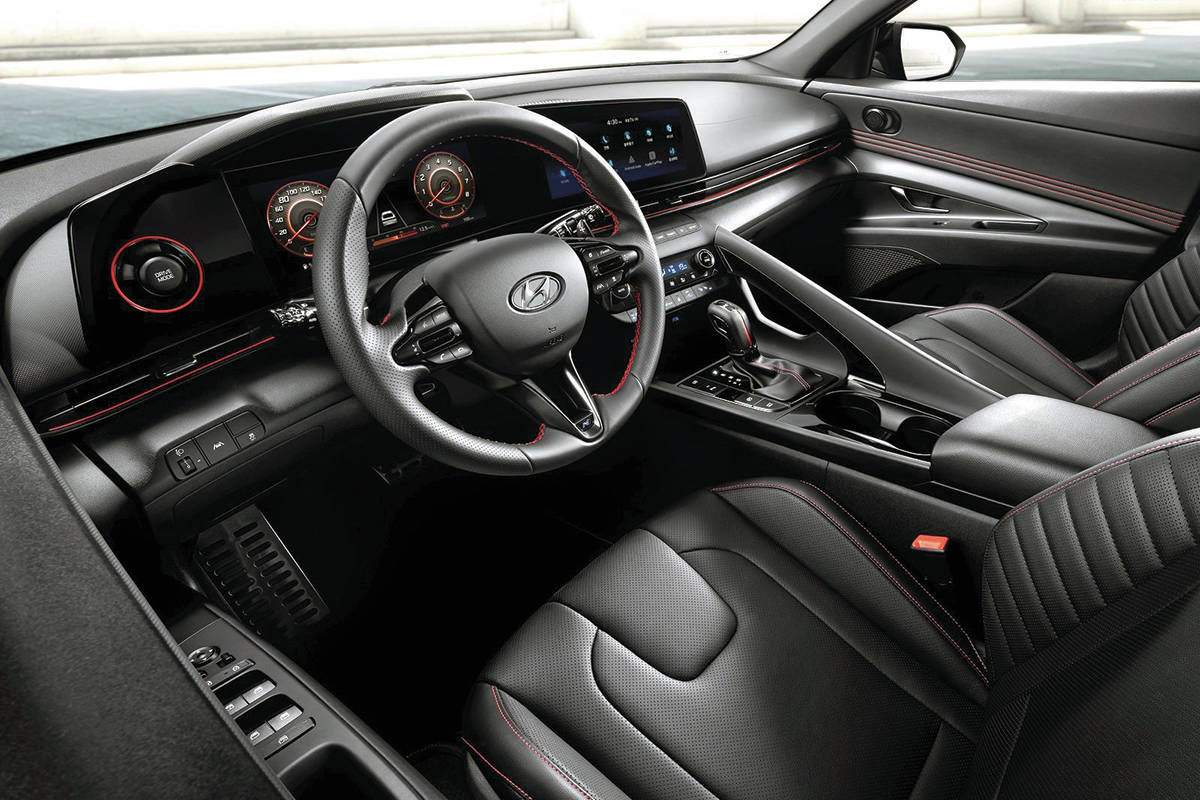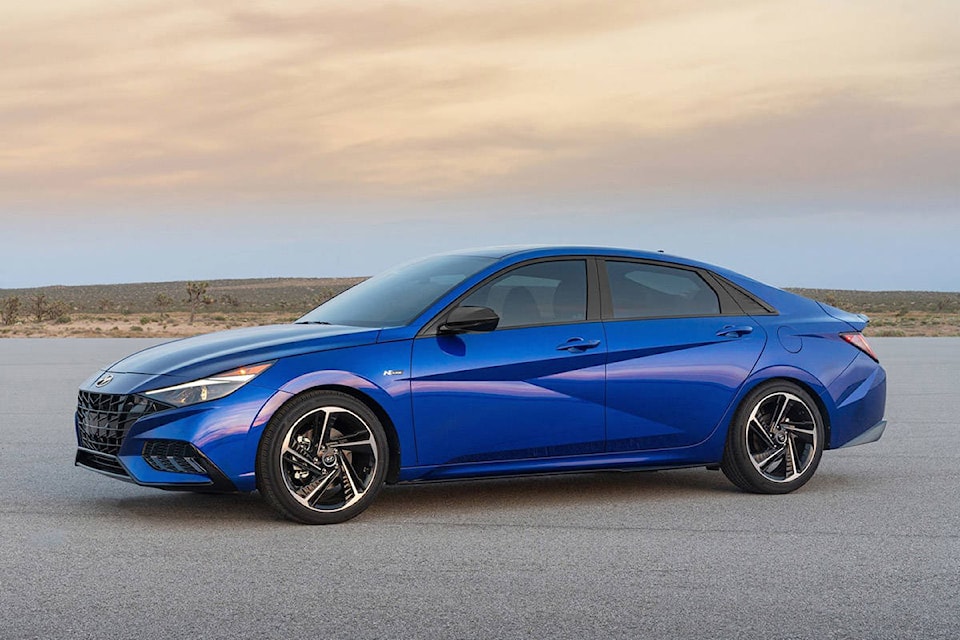An everyday compact car masquerading as a premium sedan sounds like a winning formula, and a welcome one for buyers. Add fuel-sipping and performance-focused versions to broaden interest and the result is the 2021 Hyundai Elantra.
The nameplate was launched in the early 1990s as a budget-oriented competitor to the established Honda Civic, Toyota Corolla and Ford Escort models, to name a few. Back then, the Elantra’s low price was its primary claim to fame: A new-car alternative to buying used.
Today, the Elantra is one of the top nameplates in a field that has suffered due to the growing popularity of the utility vehicles. But where others — notably domestic-based automakers — appear to have given up on small sedans, Hyundai is doubling down.

The new Elantra’s design is, to put it mildly, jaw-dropping and follows the general shape of the larger Sonata. Most notable is the aggressively styled “jewel pattern” grille and enlarged air intakes. Also attractive are the side creases extending along the door and rear-fender panels that blend into a knife-edged trunk lid. Combined with a sweeping fastback roofline, the Elantra looks as good from the rear as from the front, if not better.
Compared with the previous-gen Elantra, the 2021 model is more than five centimetres longer, 2.5 centimetres wider and it gains close to that amount between the front and rear wheels. The car’s slightly lowered stance and roofline (with no loss in front or rear headroom) make it appear larger than measurements otherwise indicate.
The Elantra’s stronger and lighter platform has also allowed Hyundai’s design team to lower the car’s centre of gravity to improve cornering agility.
The interior isn’t quite as dramatic as the outside, but it looks downright luxurious. An available 10.25-inch-wide screen for the communications, infotainment and navigation-system is positioned directly beside the electronic gauge panel. A traditional T-shaped shift lever, instead of dials or switches, also speaks to the cabin’s conservative environment.
There’s also nothing too unusual about the Elantra’s base engine, a 147-horsepower 2.0-litre four-cylinder that carries over from the previous model.
For the first time in an Elantra, however, a hybrid system is optional. It consists of a 1.6-litre four-cylinder with an electric motor that makes a net 139 horsepower and 195 pound-feet.
A six-speed manual transmission is standard, while a continuously variable unit (CVT) is optional. A quick-shifting six-speed automated manual is paired with the hybrid and a seven-speed version comes with the N Line.
Hyundai says the hybrid will achieve better than 4.7-litres/100 km in combined city/highway driving. By comparison, the CVT-equipped Elantra is rated at 7.5 l/100 km in the city, 5.7 on the highway and 6.7 combined.
In another first for the Elantra, there’s a performance-focused N-Line. It’s fitted with a turbocharged 1.6-litre four-cylinder that makes 201 horsepower and 195 pound-feet of torque. A six-speed manual transmission is standard with the N Line, while a seven-speed paddle-shifted automatic is available. An independent rear suspension is standard for the N Line, as it is with the hybrid. The base Elantra uses a torsion-beam (solid) rear axle.
Pricing starts at $19,750 for the base Essential model. It arrives with dynamic-safety tech such as forward-collision avoidance with pedestrian detection, lane-keeping assist, driver-attention warning and rear cross-traffic alert.
The receives a few more goodies such as dual-zone climate control and hands-free trunk release. The N Line ($30,500) gets heated sport-style front seats (power-operated for the driver) and Goodyear summer tires wrapped around 18-inch wheels.
The variety of Elantra models and content is not dissimilar to what’s available from the top-selling Honda Civic and Toyota Corolla, but a stunning design perhaps gives this Hyundai the edge.

What you should know: 2021 Hyundai Elantra
Type: Front-wheel-drive compact sedan
Engines (h.p.)2.0-litre I-4 (147); 1.6-litre I-4 with electric motor (139); 1.6-litre I-4, turbocharged (201)
Transmissions: Six-speed manual; continuously variable (CVT); six-speed automated manual (hybrid); seven-speed automated manual (N Line)
Market position: With domestic-based sedans — both compact and midsize — almost extinct, import-based automakers such as Hyundai now have the playing field to themselves. What’s more, such automakers are advancing the segment and not slowing down.
Points: Eye-catching design makes for one of the best-looking sedans on the market. • Hybrid and performance editions should appeal to a wider cross-section of buyers. • Interior design is conservative, but includes the latest in technology. • Standard array of safety tech covers nearly all contingencies. • An attractive price point for all models is a huge plus.
Driver assist: Blind-spot warning with cross-traffic backup alert (opt.); active cruise control (opt.); front and rear emergency braking (opt); inattentive-driver alert (n.a..); lane-departure warning (opt.); pedestrian detection (opt.)
L/100 km (city/hwy) 7.5/5.7 (CVT); Base price (incl. destination) $19,750
BY COMPARISON
Honda Civic
- Base price: $25,200
- Popular sedan’s all-turbocharged engine lineup ranges from 174 to 306-h.p.
Toyota Corolla
- Base price: $20,800
- Sedan and hatchback versions are joined by a hybridrated at 4.5 l/100 km.
Volkswagen Jetta
- Base price: $24,000
- Low-key compact uses a 147-h.p. turbo I-4. GLI turbo I-4 makes 228 h.p.
-written by Malcom Gunn, Managing Partner at Wheelbase Media
If you’re interested in new or used vehicles, be sure to visit to find your dream car today! Like us on and follow us on



